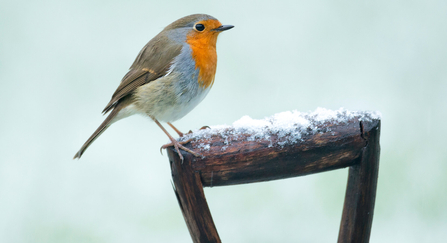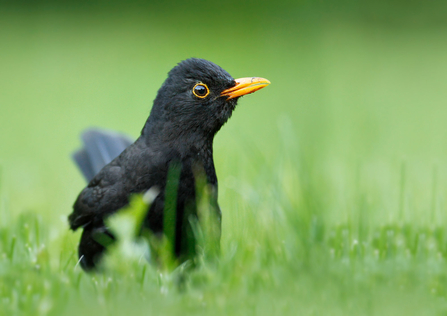Take a look outside your window at the ‘regulars’ on your feeders. There are probably a collection of blue tits, coal tits, robins, blackbirds and most likely a few greedy pigeons. But did you know that some of them might be migratory birds enjoying a winter getaway in your garden?
Winter getaways in your garden
Mark Hamblin/2020VISION

Jon Hawkins - Surrey Hills Photography
When thinking about wildlife (which I often do) and the topic of migration, we often think of summer approaching with its warmer weather and those birds that prefer the heat. Species such as the barn swallow, turtle dove and the nightingale fill us with the anticipation of longer days and warmer nights. But we don’t often consider the humble, yet charismatic robin as migratory.
How could the bird that has kept you company for years, often flittering around you whilst gardening, travel thousands of miles for better weather? Could it be possible that the Christmas robin that has been happily nibbling from your feeder, has come from northern Europe or further?
They say robins are highly territorial and this in a sense is true, however as a Licensed ringer for the BTO (British Trust for Ornithology) I can confidently say that is not the whole truth. Over the Christmas period during the cold snap, I caught five different robins in less than three days.
What makes some of them migratory and others not? Well, you will have to come along to our Migratory Bird course on 14th February to find out!

© Jon Hawkins
Another bird that might catch your eye is the delightful blackbird, with its bright yellow beak and eye ring. However, you might be thinking that your blackbird has a brown beak, or no eye ring. Well once again there is a migrator in the garden.
In Eastern and Northern Europe the ground is covered in snow, which makes life tough for this lovely thrush. They like to eat worms which will no doubt be buried under several feet of snow. Therefore, they leave the continent in their millions, mostly heading to the UK. I know of a blackbird in a colleague’s garden over the space of ten years which was only ever caught from October- February and it always weighed 20gs heavier in February as it was preparing to head north.
Migration is fascinating. Britain’s largest bird and smallest bird are both migratory. We also have a bird that graces our shores with the longest migration out of any bird.
Why do this though?
This, along with so many more questions, will be answered during our upcoming course. Along with this, we will work on our duck species identification because they are easy to ID in the field. The day will be topped off with a wonderful walk round Tice’s meadow to see some of these migration showstoppers in real life.

